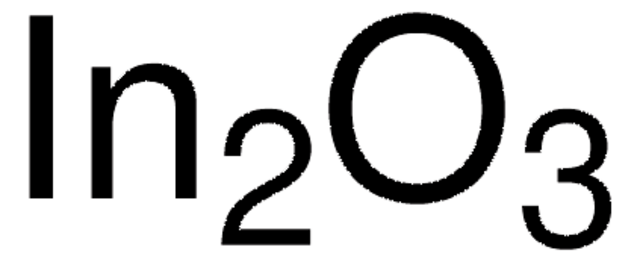Documentos clave
749729
Indium tin oxide coated PET
surface resistivity 60 Ω/sq, L × W × thickness 1 ft × 1 ft × 7 mil, sheet
Sinónimos:
ITO-PET, Polyethylene terephthalate film, ITO coated
About This Item
Productos recomendados
form
sheet
surface resistivity
60 Ω/sq
L × W × thickness
1 ft × 1 ft × 7 mil
SMILES string
O=[In]O[In]=O.O=[Sn]=O
InChI
1S/2In.5O.Sn
InChI key
LNNWKAUHKIHCKO-UHFFFAOYSA-N
¿Está buscando productos similares? Visita Guía de comparación de productos
Categorías relacionadas
1 of 4
Este artículo | 639303 | 749737 | 703192 |
|---|---|---|---|
| surface resistivity 60 Ω/sq | surface resistivity 60 Ω/sq | surface resistivity 100 Ω/sq | surface resistivity 8-12 Ω/sq |
| L × W × thickness 1 ft × 1 ft × 7 mil | L × W × thickness 1 ft × 1 ft × 5 mil | L × W × thickness 1 ft × 1 ft × 7 mil | L × W × thickness 25 mm × 25 mm × 1.1 mm |
General description
Application
Features and Benefits
Physical properties
Storage Class
13 - Non Combustible Solids
wgk_germany
WGK 3
flash_point_f
Not applicable
flash_point_c
Not applicable
Elija entre una de las versiones más recientes:
¿Ya tiene este producto?
Encuentre la documentación para los productos que ha comprado recientemente en la Biblioteca de documentos.
Artículos
A transparent conductive electrode (TCE) is an essential component of various optoelectronic devices such as solar cells, liquid-crystal displays (LCD), light-emitting diodes (LED), and touch screens.
Recent progress in the area of solution-processed functional materials has led to the development of a variety of thin-film optoelectronic devices with significant promise in the industrial and consumer electronics fields.
Inorganic nanomaterials are tunable by size, shape, structure, and/or composition. Advances in the synthesis of well-defined nanomaterials have enabled control over their unique optical, electronic, and chemical properties stimulating tremendous interest across a wide range of disciplines. This article illuminates some of the recent research advances of inorganic nanoparticles (NPs) in optoelectronics applications.
Professor Chen (Nankai University, China) and his team explain the strategies behind their recent record-breaking organic solar cells, reaching a power conversion efficiency of 17.3%.
Nuestro equipo de científicos tiene experiencia en todas las áreas de investigación: Ciencias de la vida, Ciencia de los materiales, Síntesis química, Cromatografía, Analítica y muchas otras.
Póngase en contacto con el Servicio técnico



